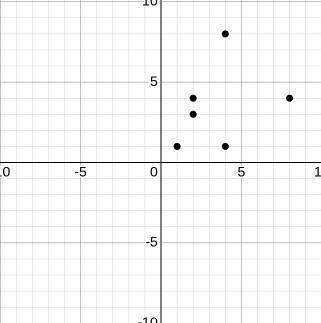
Mathematics, 19.08.2019 01:30 madelein51301
the vertices of δghi are g (2, 4), h (4, 8), and i (8, 4). the vertices of δjkl are j (1, 1), k (2, 3), and l (4, 1). which conclusion is true about the triangles?
a. they are congruent by the definition of congruence in terms of rigid motions.
b. they are similar by the definition of similarity in terms of a dilation.
c. the ratio of their corresponding sides is 1: 3
d. the ratio of their corresponding angles is 1: 3.

Answers: 1


Other questions on the subject: Mathematics

Mathematics, 21.06.2019 14:00, zariasimone2
What is the slope of a line that is perpendicular to y = 3x + 1
Answers: 1

Mathematics, 21.06.2019 16:20, sighgabbie
Find the value of x for which abcd must be a parallelogram -9-6x x-30
Answers: 2

Mathematics, 21.06.2019 19:30, tayleeanntabeln2226
Write a function rule for the table. hours worked pay 2 $16.00 4 $32.00 6 $48.00 8 $64.00 p = 16h p = 8.00h p = h + 16 h = 8.00p
Answers: 1

Mathematics, 21.06.2019 21:40, Fangflora3
The sides of a parallelogram are 24cm and 16cm. the distance between the 24cm sides is 8 cm. find the distance between the 16cm sides
Answers: 3
You know the right answer?
the vertices of δghi are g (2, 4), h (4, 8), and i (8, 4). the vertices of δjkl are j (1, 1), k (2,...
Questions in other subjects:


Mathematics, 16.07.2019 18:00


Biology, 16.07.2019 18:00

Biology, 16.07.2019 18:00








